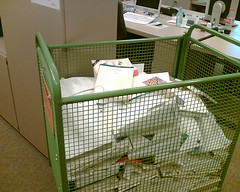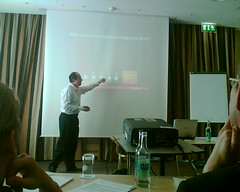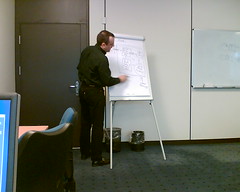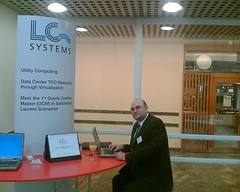I checked this tool today :
http://sourceforge.net/projects/opr
This tool provide a simple way of not hardcoding passwords in shell scripts. Hardcoding passwords in shell scripts is a bad practice. The source code may be shared by many developers, may resides on unsecure servers (CVS), may be printed, etc… The passwords may change often too.
This tool uses a simple file to stores the passwords encrypted. Well, I urge you to secure this file to make it non-accessible for others.
I am not going to decode nor rate the encryption algorythm, the fact is, you do not have clear text passwords. It could be also possible to have clear text password in a separate text file, which would not be that less secure, but it is ugly.
To make it clear (I hope), it is a 2-ways encryption, so if you have access to the file and the source code of the algorythm, you can crack the password. Sounds weak? Well, Oracle Proxy Users with Internet Directory, Application Server, Portal and all those products are not much different. The only 100% passwordless solution I am aware of is the external OS identification.
Well, that said, let’s look how it works.
# ./configure # make # make install
let’s create the repository
$ export OPRREPOS=$ORACLE_HOME/dbs/oprrepos $ opr -c
store the password for scott on LSC01
$ opr -a LSC01 SCOTT lsc please enter the password : please re-enter the password : entry (LSC01, scott, lsc) added.
let’s test
$ sqlplus scott/$(opr -r LSC01 SCOTT)@LSC01 SQL*Plus: Release 10.2.0.2.0 - Production on Tue Jul 25 13:51:48 2006 Copyright (c) 1982, 2005, Oracle. All Rights Reserved. Connected to: Oracle Database 10g Enterprise Edition Release 10.2.0.2.0 - Production With the Partitioning, OLAP and Data Mining options
This is quite convenient. I will use this to store the RMAN password to connect to the RMAN repository in my backup scripts





